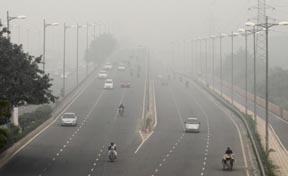 NEW DELHI: Contesting World Health Organization (WHO) report that Delhi is the most polluted city in the world, a government’s air control watch body has termed the figures quoted in the study as “exceedingly high”.
NEW DELHI: Contesting World Health Organization (WHO) report that Delhi is the most polluted city in the world, a government’s air control watch body has termed the figures quoted in the study as “exceedingly high”.
“The figures mentioned in the report are exceedingly high,” said Gufran Beig, Program Director and Chief Program Scientist of the System of Air Quality Weather Forecasting and Research (SAFAR) told PTI.
The program is an initiative started by Indian Institute of Tropical Meteorology (IITM), Pune, a constituent under the Ministry of Earth Sciences.
Beig added that in a study conducted from 2011-2013, it was observed that PM2.5 (particulate matters less than 2.5 microns in size) level was between 105-110 microgram per meter cubic as against the normal limit of 40 and PM10 between 196-205 against the normal limit of 60.
The WHO figures states that the level of PM2.5 in Delhi was observed to be 153 and PM10 (particulate matters less than 2.5 microns in size) to be 286. As per the WHO standards the limit for PM2.5 should be 10 and PM10 should be 20.
The 2014 Ambient Air Pollution (AAP) database contains results of outdoor air pollution monitoring from almost 1,600 cities in 91 countries.
The national capital has the highest concentration of PM2.5 form of air pollution, which is considered most serious.
PM2.5 can easily enter the both through inhaling. It can cause chronic bronchitis, lung cancer and heart disease.
In a study conducted by SAFAR, it was observed that emissions from local pollution sources in Delhi has increased by 10 to 20 per cent from 2010 (94.26Gg/Yr) to 2014 (107.49Gg/yr) from various sectors led by transport sector but their reflection in concentration level of pollutant is highly non-linear and steady and cannot lead to sudden extremes in pollution.
“Considering these scientific issues, SAFAR data for 2010-2014 reveals that there was no systematic increasing or decreasing trend in the level of PM2.5 during past four years in Delhi but frequency of extreme pollution events are on increase. PM10 level of January 2014 is highest so far,” the report said.
It added that the air quality is governed by three complex scientific processes namely local emissions, local weather and long to short range transport. -PTI






